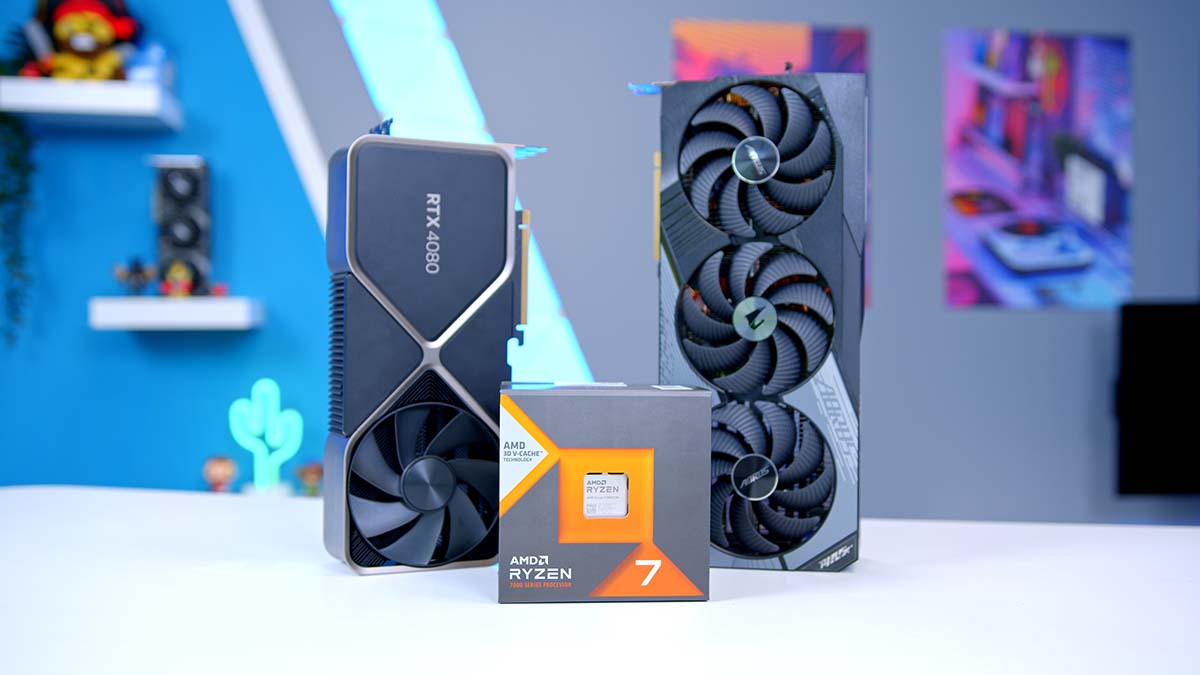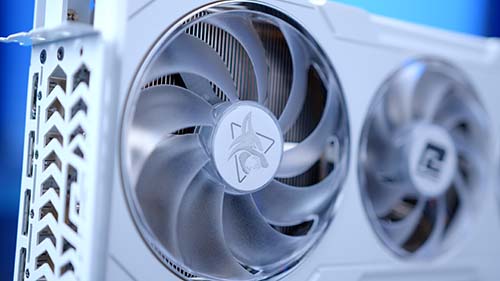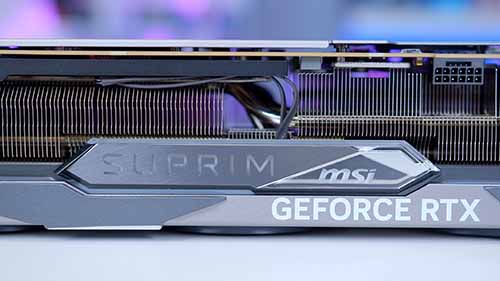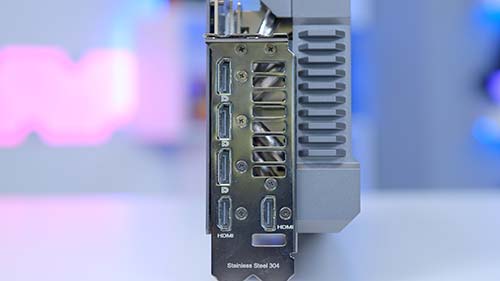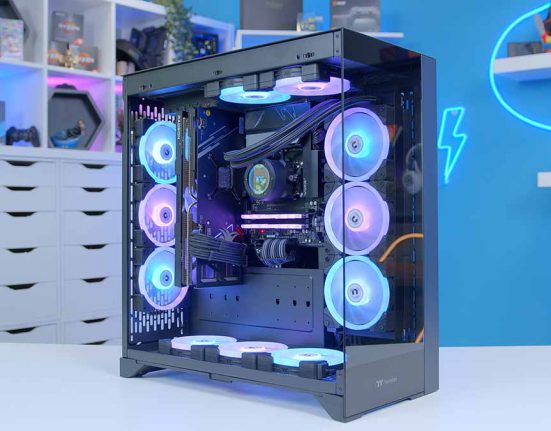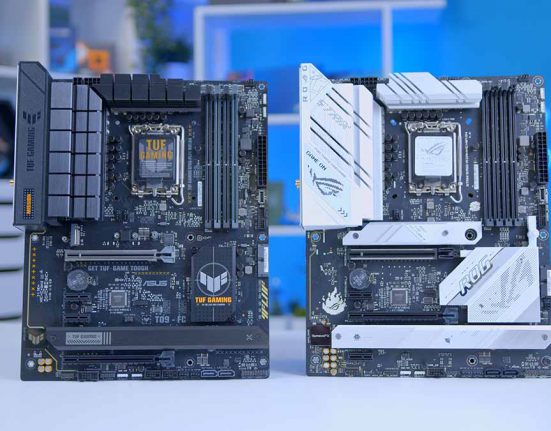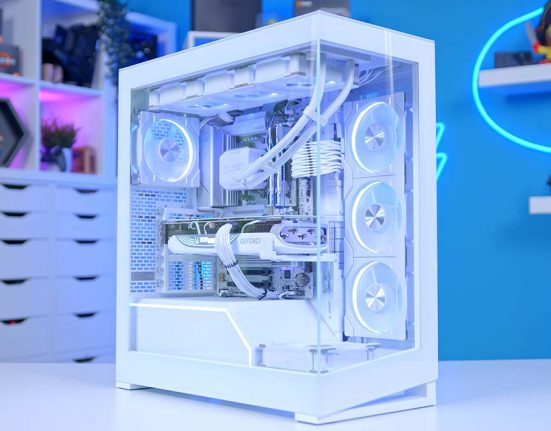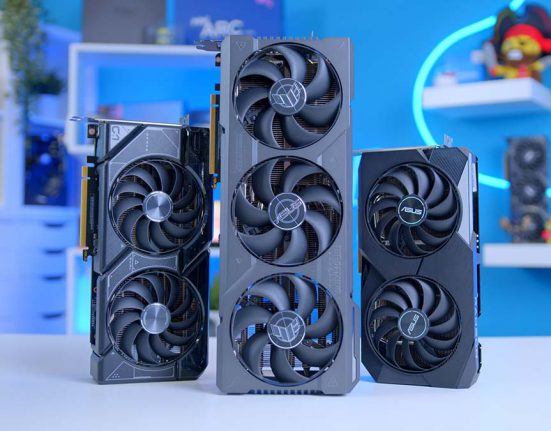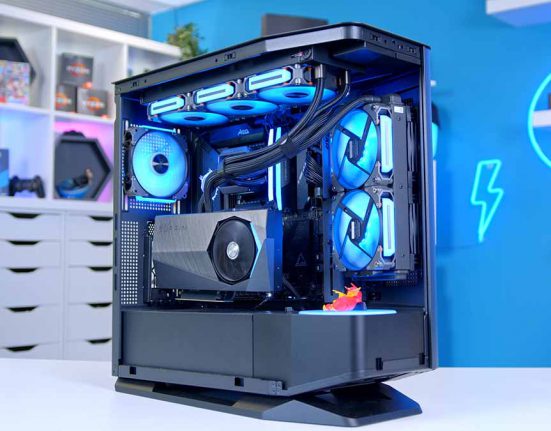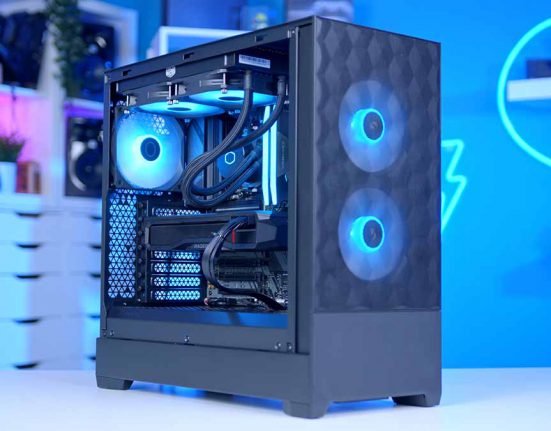AMD’s Ryzen 7 7800X3D is one of the best CPUs available for gaming, offering great metrics, making it a great pick to put into any high-end PC build. The Ryzen 7 7800X3D is particularly powerful when paired with a capable graphics card, allowing for impressive performance at native 4K with Ray-Tracing possibilities too. As with any CPU upgrade, however, there’s the age old question, of which GPU is the best to pair with a CPU like the Ryzen 7 7800X3D?
In this guide we’ll be covering our top GPU choices to pair with the Ryzen 7 7800X3D. We’ve reviewed and tested a range of different graphics cards that we think are the best GPUs for the Ryzen 7 7800X3D, including options from both NVIDIA and AMD and delving into the specifics of each pairing below.
Suggested Article: Best CPU Coolers for the AMD Ryzen 7 7800X3D
Best GPUs for Ryzen 7 7800X3D
1. AMD RX 7900 XTX
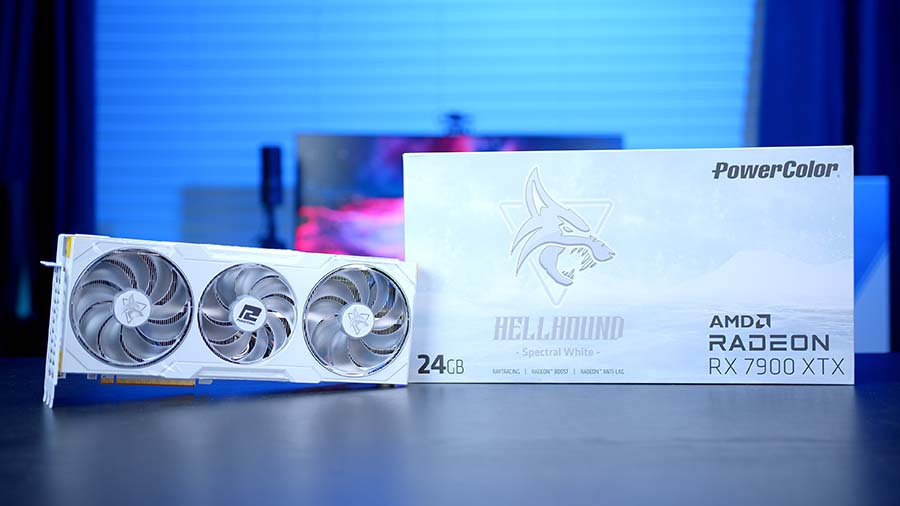
AMD’s RX 7900 XTX is another top choice to pair with the Ryzen 7 7800X3D. The RX 7900XTX is AMD’s flagship GPU, which sports exceptional performance and offers a very appealing price point when compared to NVIDIA’s counterparts. The RX 7900 XTX provides users with a massive 24GB of VRAM, and 6144 stream processors, which allows the RX 7900 XTX to rival the likes of the RTX 4080 with or without the advantage of NVIDIA’s DLSS 3.0 technology. Users can expect this card to be able to handle maxed out games at 4K without any problems, and workstation applications are in a similar boat too when paired with the Ryzen 7 7800X3D.
| Key Specs | AMD RX 7900 XTX |
|---|---|
| Video Memory | 24GB GDDR6X |
| Memory Bus | 384-bit |
| Core Clock Speed | 2.3GHz |
| Boost Clock Speed | 2.5GHz |
| Stream Processors | 6144 |
| Power Consumption | 355W |
| MSRP | $999 |
AMD has done a great job of improving stocking supply, bringing it more in line with their NVIDIA counterparts. Stocking of the RX 7900 XTX sits in a healthy state, with cards readily available for prices hovering around MSRP. Ray-tracing is possible with the RX 7900 XTX but again is weaker in terms of performance when compared to NVIDIA GPUs.

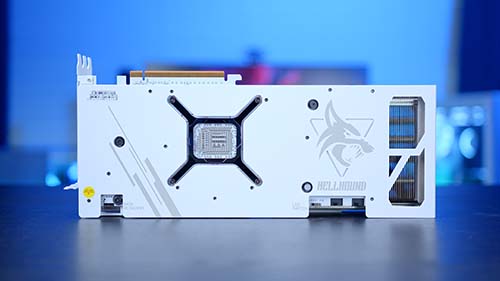
2. NVIDIA RTX 4080

The RTX 4080 is a great option to pair with the Ryzen 7 7800X3D for those looking to reach high frame rates at 4K thanks to the sheer power of the card. NVIDIA’s RTX 4000 series of GPUs all benefit hugely from NVIDIA’s Ada Lovelace architecture thanks to a little help from DLSS 3.0. With ‘Frame Generation’ firmly at the forefront, the Ada Lovelace architecture minimises CPU and GPU overheads, allowing the GPUs to focus on what they do best.
NVIDIA’s RTX 4080 sports 16GB of VRAM, and 9728 CUDA cores with fast clock speeds, so there’s plenty of potential for those who are looking for the best in both rasterised and Ray-Traced performance without having to purchase the much more expensive RTX 4090.
| Key Specs | NVIDIA RTX 4080 |
|---|---|
| Video Memory | 16GB GDDR6X |
| Memory Bus | 256-bit |
| Core Clock Speed | 2.21GHz |
| Boost Clock Speed | 2.51GHz |
| CUDA Cores | 9728 |
| Power Consumption | 320W |
| MSRP | $1,199 |
As has been a running theme with GPU releases, the price of the RTX 4080 is not cheap. With an MSRP in excess of $1100, the RTX 4080 has massive costs associated with it and comes in almost $500 more expensive at MSRP than the card it replaced, the RTX 3080. Whilst yes it brings a whole host of new tech and performance, many if not the majority of consumers are simply priced out of purchasing. With the large from-factor of the RTX 4080, the size of the card can make it more difficult to fit into a PC build, so be sure to check clearance before buying a new GPU for your Ryzen 7 7800X3D.
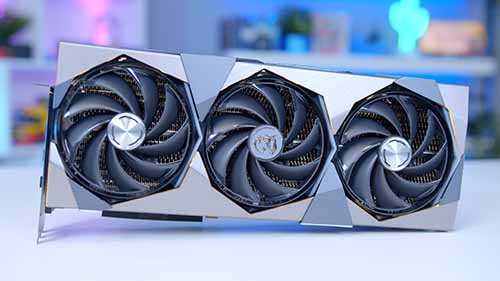
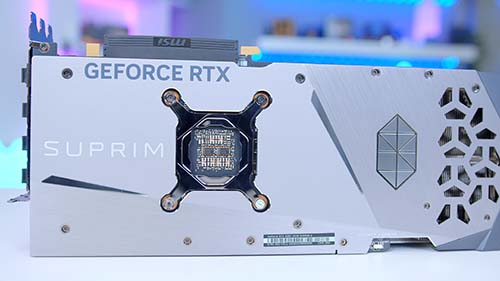
3. NVIDIA RTX 4090
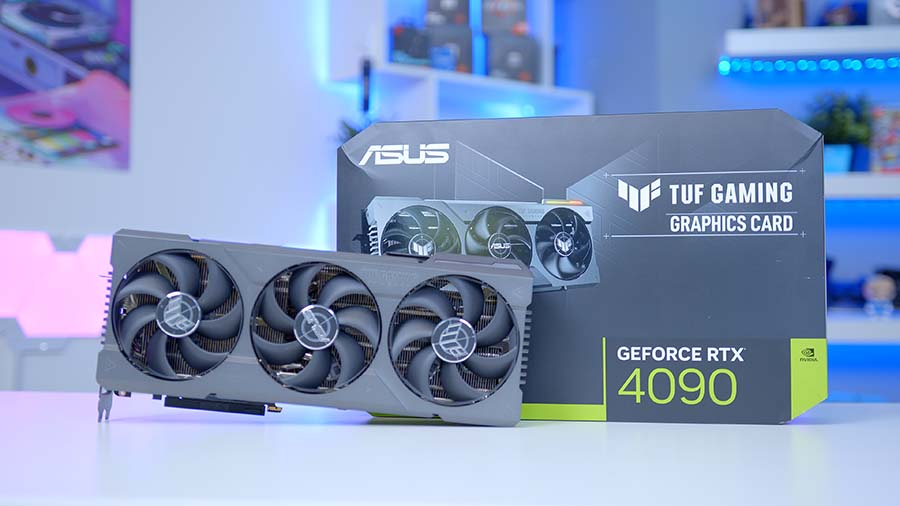
NVIDIA’s flagship GPU, the RTX 4090 is by far the best performing GPU available on the market. It is a great choice when pairing with the Ryzen 7 7800X3D, especially those looking for a very top-end gaming PC build. Much like the RX 7900 XTX, the RTX 4090 offers 24GB of Video Memory, but what sets this GPU apart is the tools it has at it’s disposal. DLSS 3.0 allows for the RTX 4090 to provide superior performance over any other card, and what’s more, this technology is supported in a wider array of games and applications than similar offerings from AMD. Paired with a CPU with strong gaming performance like the Ryzen 7 7800X3D, the RTX 4090 poses no problems at 4K resolutions and Ray-Tracing also becomes little issue.
| Key Specs | NVIDIA RTX 4090 |
|---|---|
| Video Memory | 24GB GDDR6X |
| Memory Bus | 384-bit |
| Core Clock Speed | 2.23GHz |
| Boost Clock Speed | 2.52GHz |
| CUDA Cores | 16384 |
| Power Consumption | 450W |
| MSRP | $1599 |
NVIDIA played it fairly safe with the aesthetic of the card with it near identical of that to the RTX 3000 line-up. The design of the RTX 4090 has a familiar feel and whilst a great looking card, we feel NVIDIA could have switched up the aesthetic of the RTX 4000 lineup.
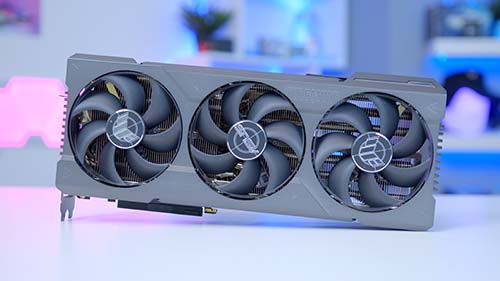
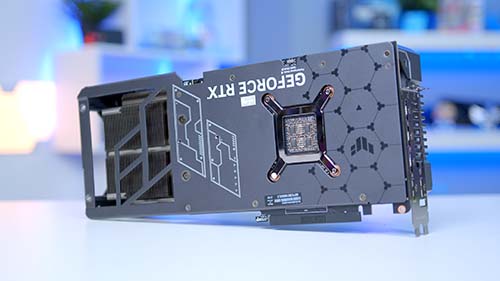
How We Tested GPUs for the Ryzen 7 7800X3D
In order to test and evaluate the best GPUs for the Ryzen 7 7800X3D there are a number of factors that we take into account, these are:
- Performance
- Compatibility
- Aesthetic
- Value for Money
Frequently Asked Questions
What is the best GPU to pair with the Ryzen 7 7800X3D?
The RX 7900 XTX is the best GPU to pair with the Ryzen 7 7800X3D. Striking a good balance between price and performance, this pairing is more than capable of gaming at 4K max settings.
What is the best motherboard for a Ryzen 7 7800X3D?
The B650E is, in most cases the best option to pick up for your Ryzen 7 7800X3D.
What size PSU do I need for an Ryzen 7 7800X3D PC build?
As a minimum 850W. However, we’d recommend 1000W just to be safe. A 1000w PSU has enough extra wattage as a buffer for degradation.


